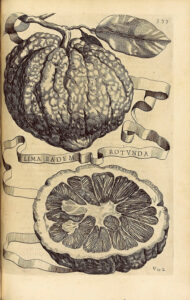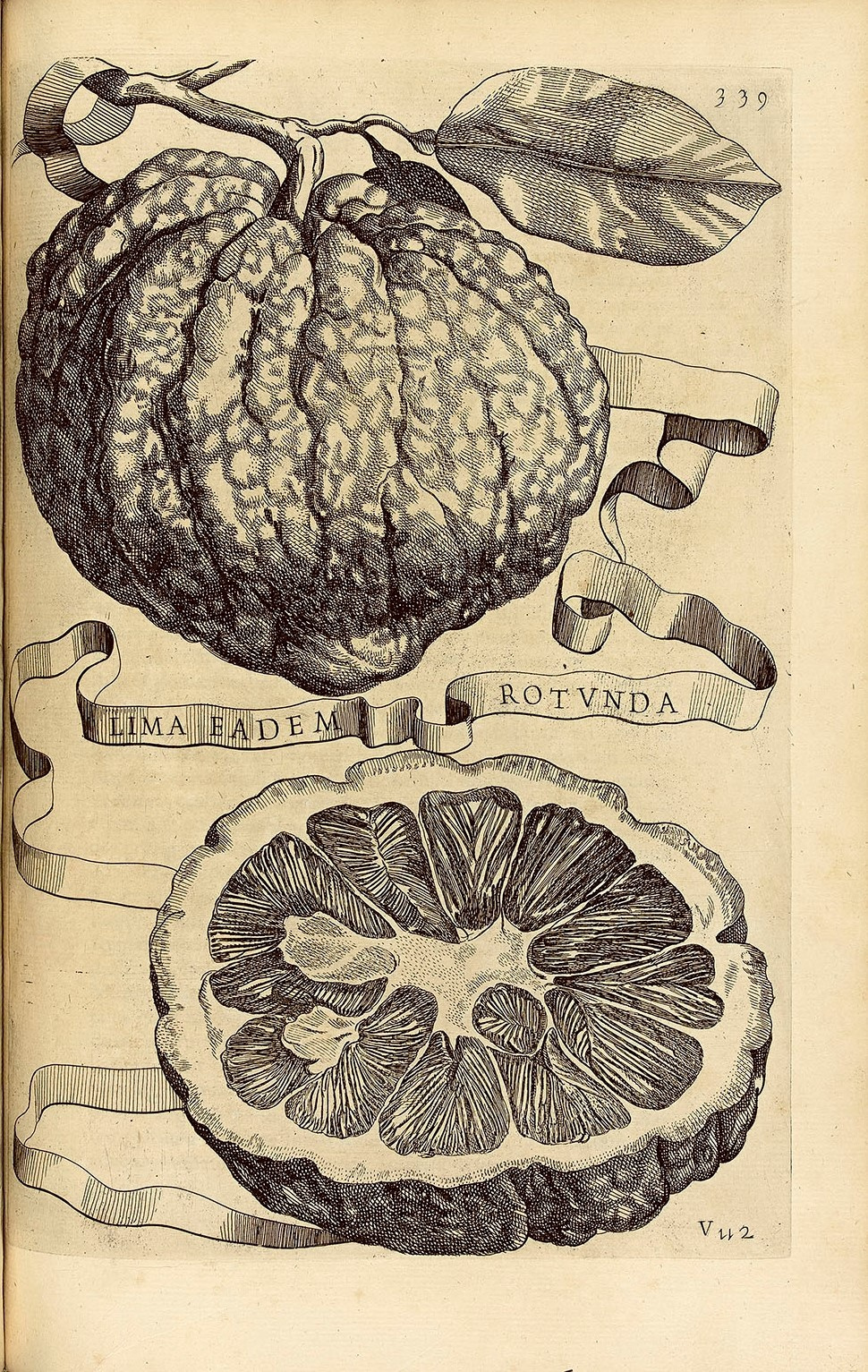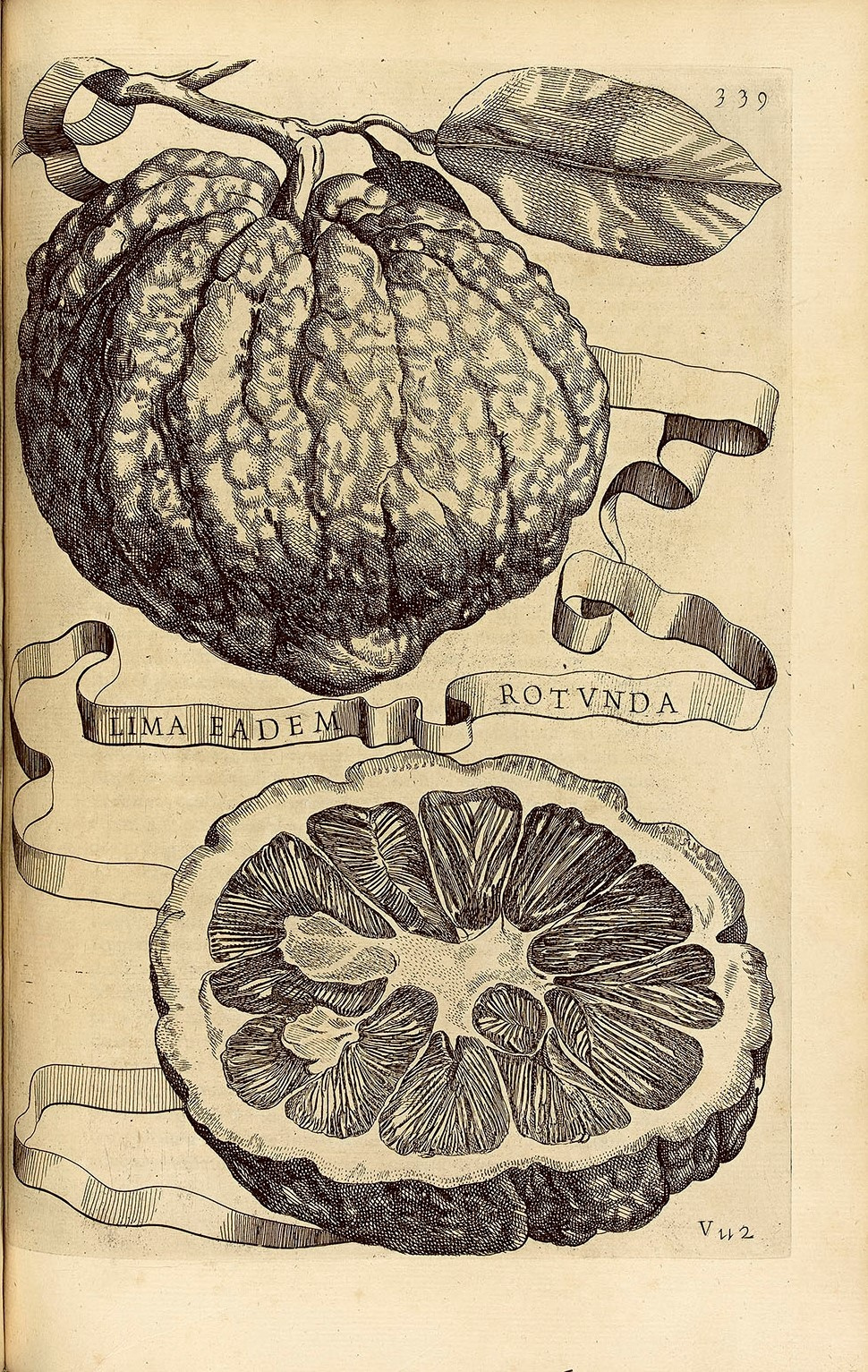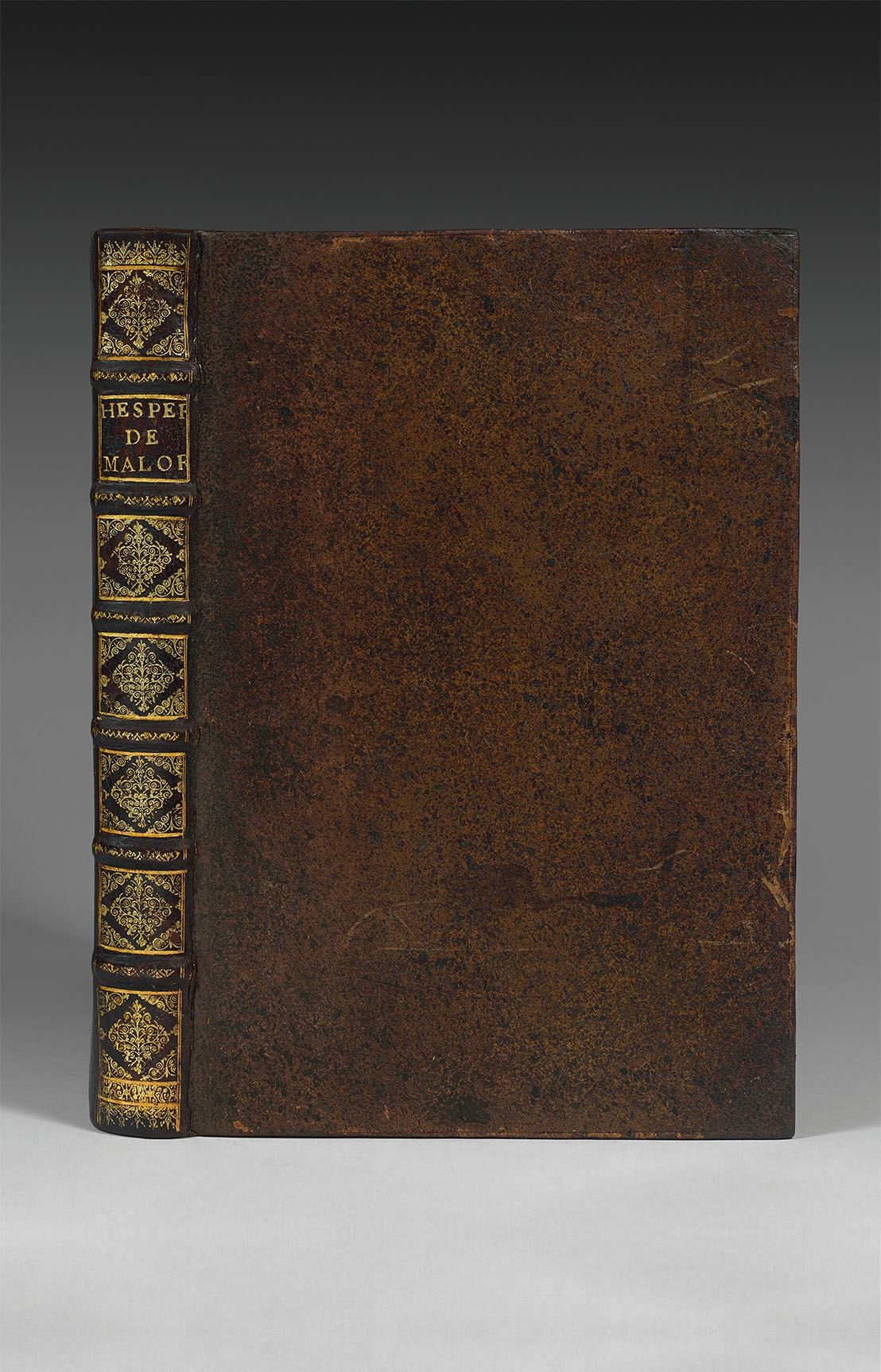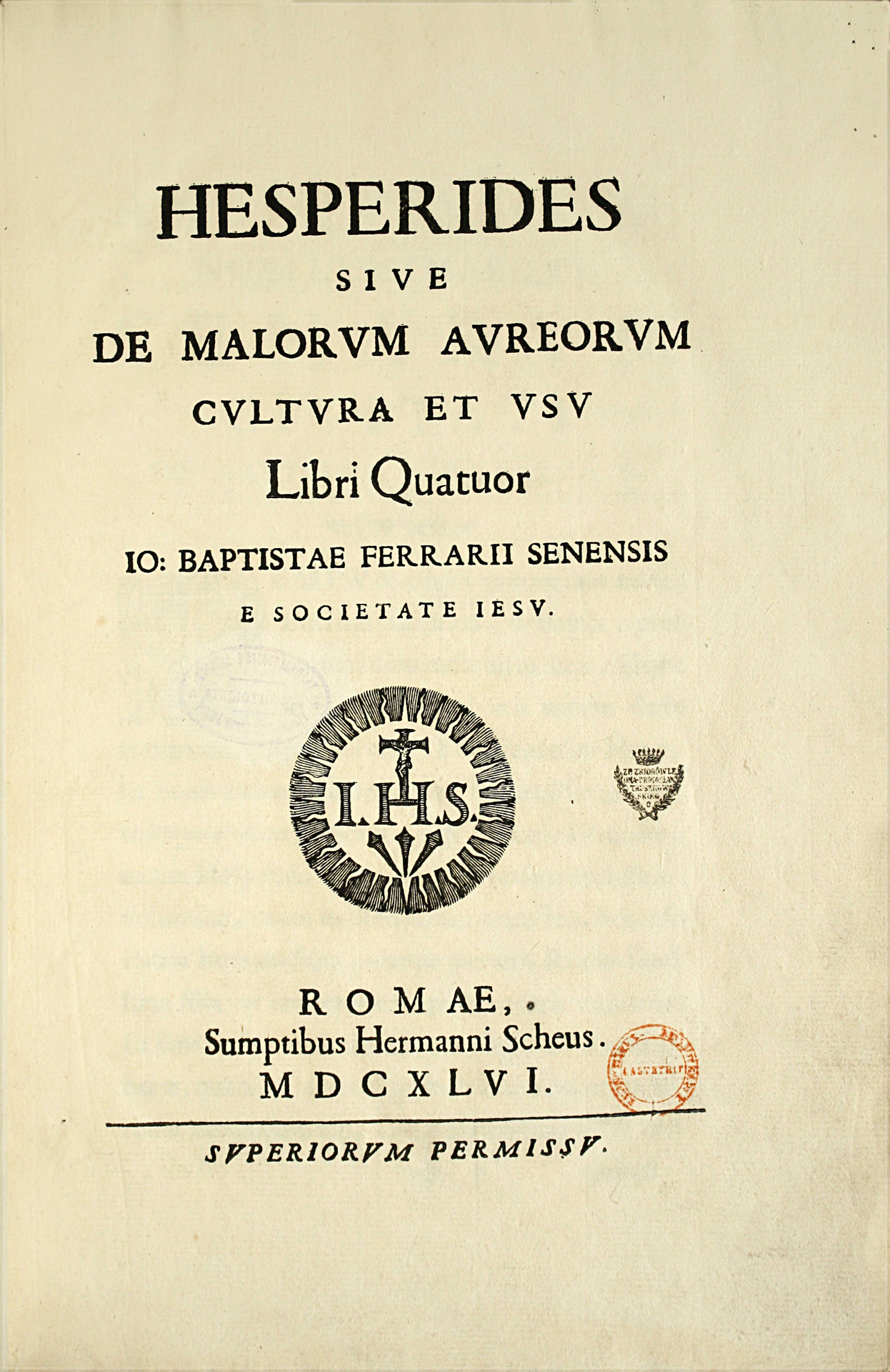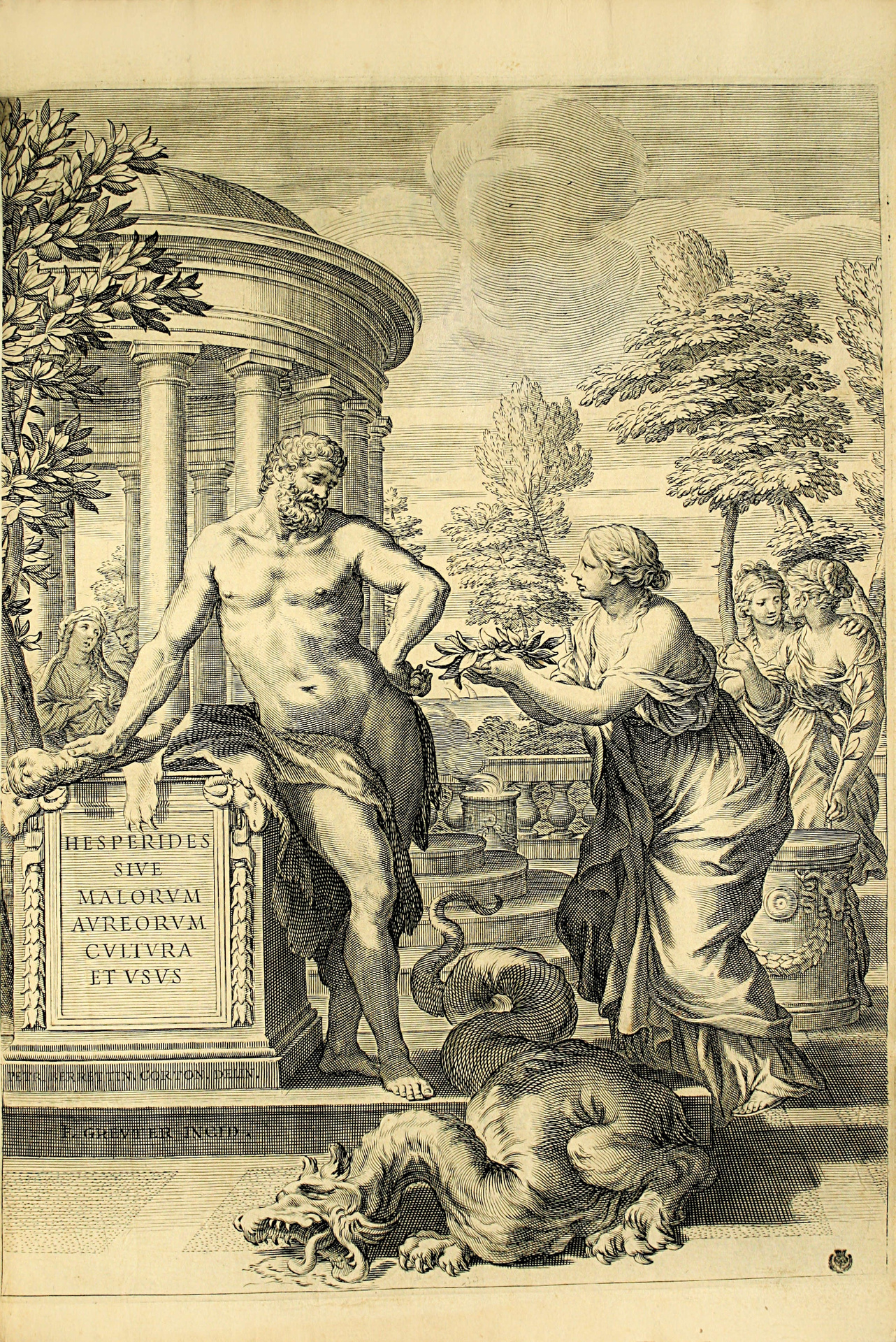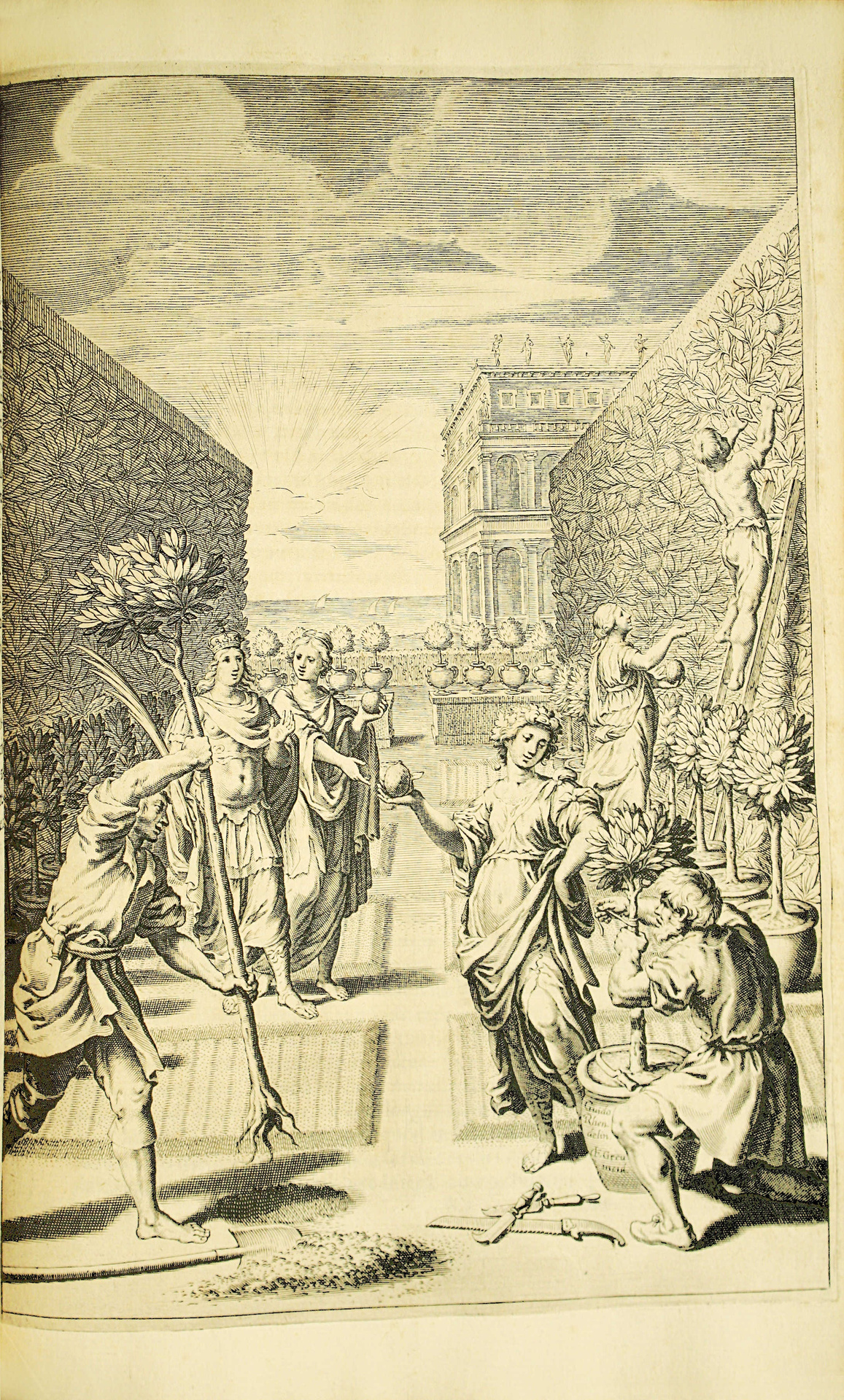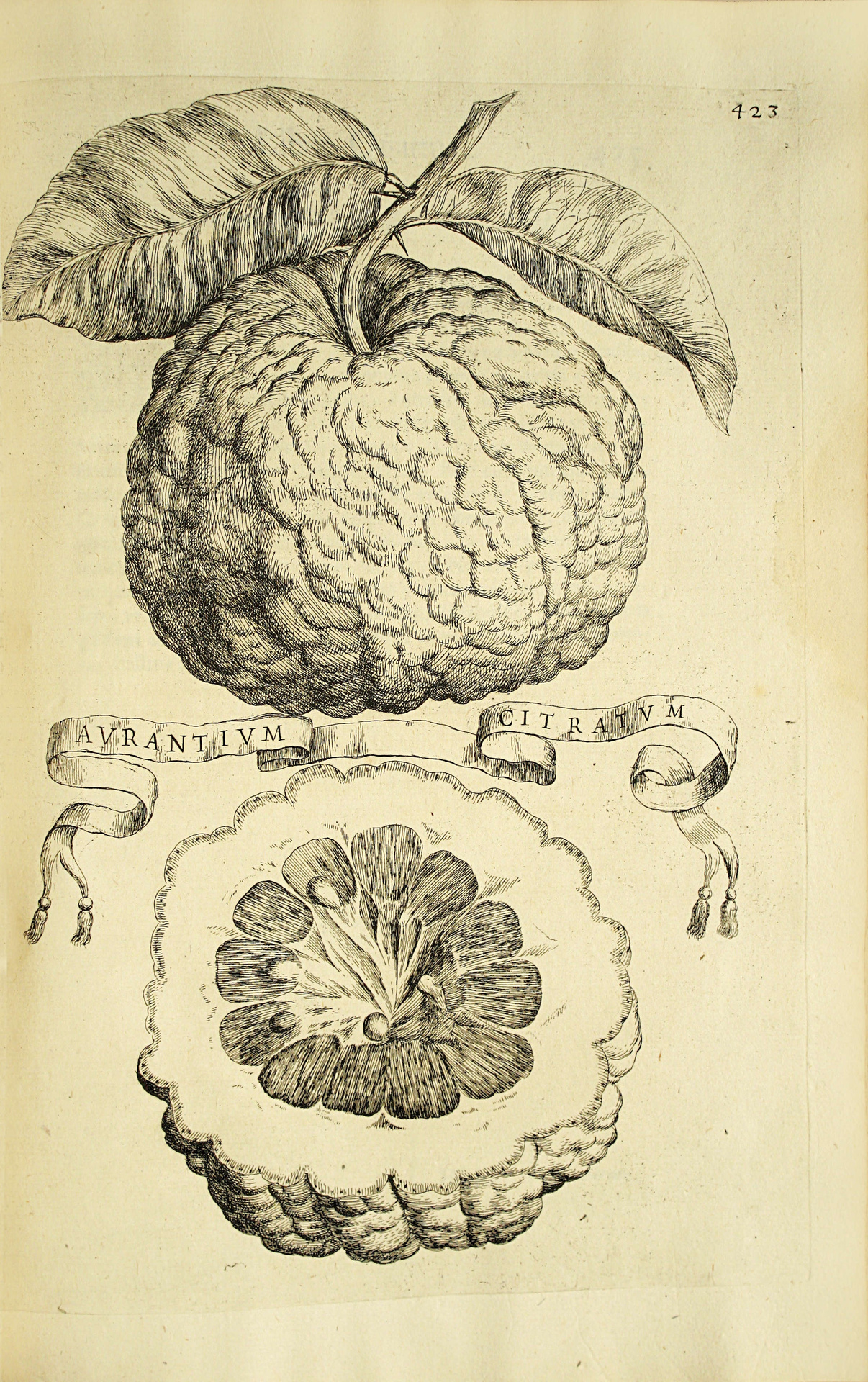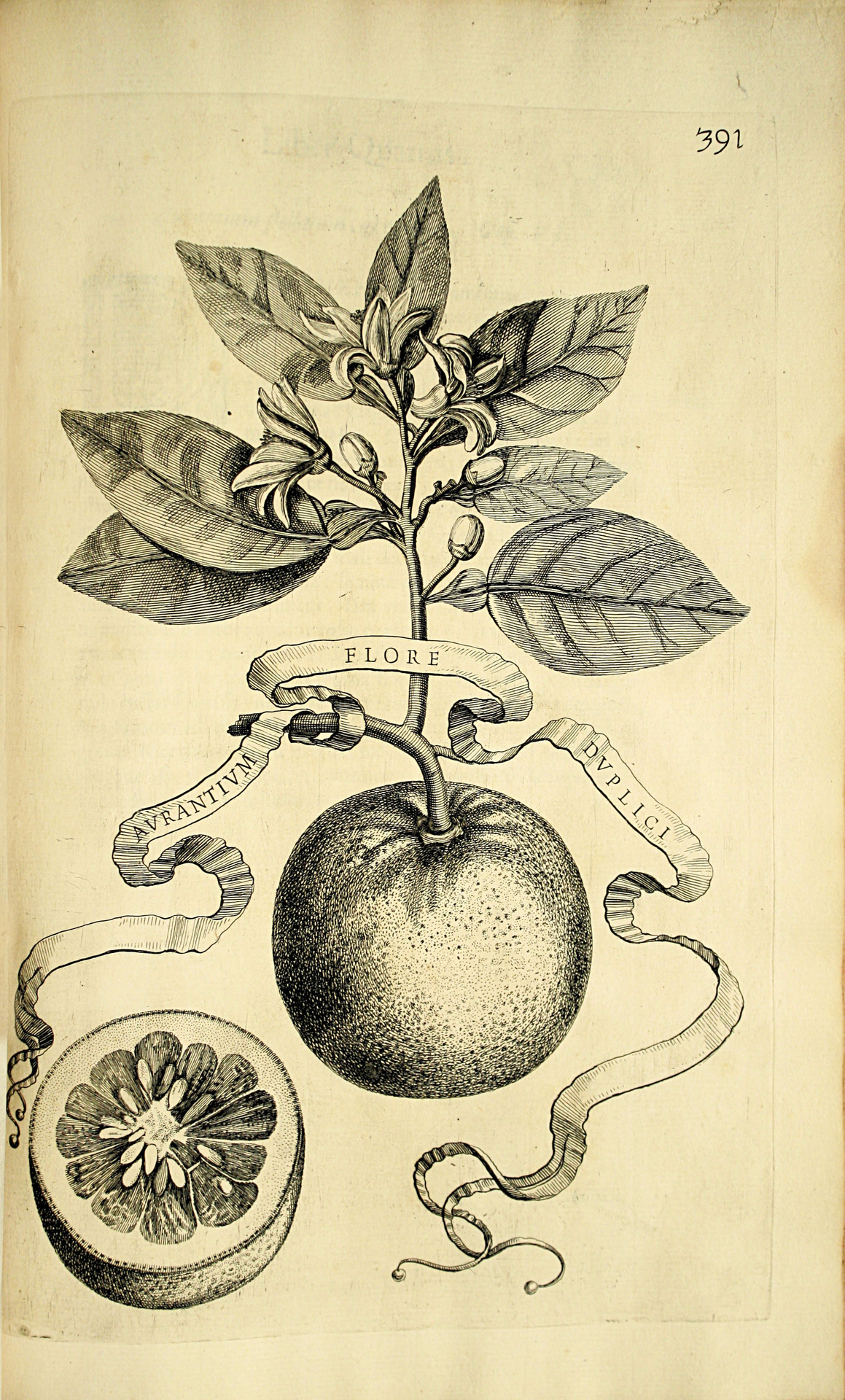Romae, Hermann Scheus, 1646.
Folio [345 x 230 mm] of (6) ll. including the frontispiece, 480 pp., (8) ll. A few slightly browned leaves. Bound in contemporary stiff full calf, ribbed spine decorated with gilt floral ornaments. Contemporary binding.
First edition of this “esteemed work”, one of the most beautiful baroque botanical books constituting the first monograph on citrus fruits.
Pritzel, 2878 ; Vicaire, Bibliographie gastronomique, 357-358 ; Nissen, BBI, 621 ; Hofer 72 ; Sommervogel, III, 6789 ; Hunt 243 ; De Belder 124.
Jean-Baptiste Ferrari (1584-1655) is an Italian orientalist and naturalist. He joined the Society of Jesus in 1602, and distinguished himself by his piety and the extent of his knowledge. He held the chair for Hebrew at the Roman college for 28 years. Passionate about citrus fruits, he published his Hesperides in 1646, a monograph followed by the ones by Commelin and Van Sterbeeck during the 17th century and by Volckamer in the 18th century.
This treatise opens up on the history of citrus fruits or golden fruits. In the Greek mythology, there are three Hesperides Aegle, Arethusa and Hesperthusa. They were nymphs living in orchards where “golden apples” grew, a symbol for immortality.
According to the legend, after barbarian invasions in Africa they went to Italy for their sake and to safeguard the golden fruits. Aegle settled in Salo, on Lake Garda with her lemons, Arethusa went to Liguria with her limes and Hesperthusa in Campania with her oranges.
This first part is completed with a history of citrus agriculture and then, following the aforementioned geographical disposition, come three books: volume II titled Aegle focuses on lemon, volume III Arethusa describes lime and volume IV Hesperthusa, studies sweet and bitter oranges.
The superb illustration contains an engraved frontispiece by Pierre de Cortone and 101 superb full-page plates drawn by Fr. Albani also known as l’Albane, A. Sacchi, Nicolas Poussin, G. Reni dit Le Guide, Domini Ghino, G. Lanfranco, F. Romanilli, P. Ubaldini, Ph. Gagliard, and engraved by C. Bloemaert. They represent tools (3 plates), 5 views of orange groves including the ones of Barberini and Aldobrandini as well as 70 engravings of citrus fruits with their leaves along with a ribbon bearing their names.
“This work is enriched with admirable engravings by C. Bloemaert”. (A New General Biographical Dictionary, H.J. Rose, p. 352).
“The chief importance of this book lies in the excellence of its botanical plates which Nissen says were both drawn and engraved by Cornelis Bloemaerts, one of the great Dutch 17th-century botanical artists.” (Hunt)
Beautiful wide-margined copy preserved in its contemporary binding.
The last copy that went through the international public market was sold for 33 600 £ (50 000 €) at the Macclesfield auction organized by Sotheby’s London on March 16, 2004. Less beautiful than this one, it was described as such: “Contemporary calf, occasional dampstaining at head, upper cover with piece of surface torn away, extremities rubbed”.
